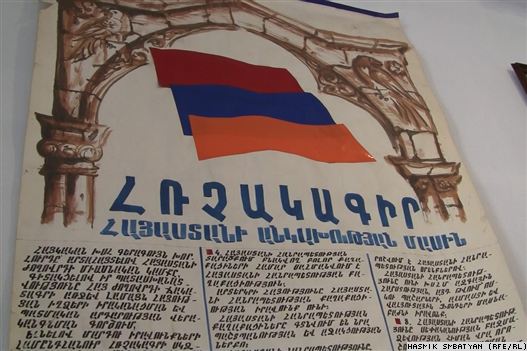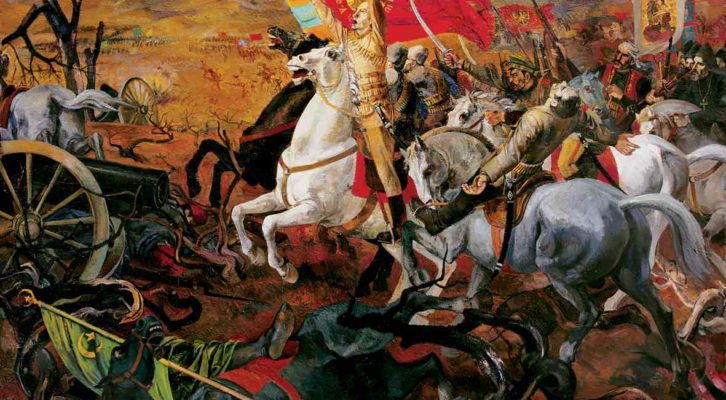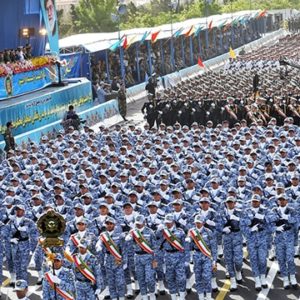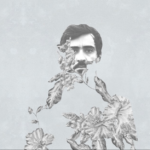In 1918 the year our Armenian ancestors, including the grandparents of this author, were fleeing getting massacred at the hands of Turkish rulers and heading towards any safe destination to survive and preserve their Armenian identity. Armenians in part of motherland Armenia were vigorously and faithfully fighting and striving to keep the Armenian nation alive and prevent Ottoman rulers from committing further another Armenian Genocide.
The Ottoman defeats at Sardarabad, Bash Abaran, and Gharakilisa staved off the annihilation of the Armenian nation, and the victories were instrumental in allowing the Armenian National Council to declare the independence of the First Republic of Armenia on May 30, 1918 (retroactive to May 28).
This said, is May 28, 1918 a day to celebrate only the triumph of establishing an independent Armenia, the Republic of Armenia, the historic political entity and the first expression of Armenian sovereignty since 1375, in addition to laying the foundations for the re-emergence of Armenian statehood in 1991 and serving as a source of inspiration for a new generation of freedom fighters struggling for self-determination against the threat of renewed genocide in Artsakh as underlined by Alan Yekikian?

The declaration announcement of the independence
May 28, 2018, is not only a day of victory but equally a day of pride for pioneering a democratic process. In this respect, Yekikian writes
On May 28, six centuries after the collapse of the last Armenian Kingdom, the Armenian National Council in Tbilisi declared the birth of a democratic republic. Founded on the principles of equality, it was the Armenian people’s first experiment with democratic self-rule. In its first year, the fledgling republic, battling the scourge of typhus and struggling to feed a dying population, conducted its first parliamentary elections. In this election, the Republic of Armenia, before any other nation, gave all adults, regardless of gender, race or religion the right to an equal and direct vote. Despite the dire circumstances, an overwhelming majority of the Republic’s voting citizens got out the vote, giving 90% of the vote to the founding party of the Republic, the Armenian Revolutionary Federation (and electing three women to the country’s legislature). A month earlier, acting Prime Minister Alexander Khatisian proclaimed the “Act of a United Armenia” creating 12 seats in parliament for deputies from Western Armenia, with which it sought reunification… The dimmest moment in our history became our brightest. A nation, growing new roots after centuries of oppression, rose above adversity and forged its own destiny in 1918 by establishing a democratic state far ahead of its time.
In 1917 Armenia was granted women’s suffrage by the ruling Russian government and later passed its own law in 1919. The final Armenian law allowed for voting and holding public office. However, Armenia was the third country after USA and Russia, 1916 and 1917 respectively, with women getting elected to the parliament of the First Republic of Armenia in 1918.
Yes through combining independence and democracy, Armenians worldwide embrace May 28, 1918, as the date of victory and pride.

Sartarabad memorial in Armenia.
And last but not least another key and a crucial question arises. Did we keep the legacy of the First Republic of Armenia alive, the legacy of a sovereign, independent and democratic state of Armenia?
International law defines sovereign states as having a permanent population, defined territory, one government and the capacity to enter into relations with other sovereign states. It is also normally understood that a sovereign state is neither dependent on nor subjected to any other power or state. Westphalia sovereignty is the concept of nation-state sovereignty based on territoriality and the absence of a role for external agents in domestic structures. One of the traditional requirements for statehood is independence in internal and external affairs. Sovereign States are commonly referred to as sovereign and independent States, in contrast to dependent States. So much is independence the essence of sovereignty that the two terms are often used more or less interchangeably. And one of the attributes of sovereignty is the capacity to enter into treaties and other international engagements, which the State is bound to carry out in good faith.
Armenia declared sovereignty on August 23, 1990, and independence on September 23, 1991. In 2008, Georgeta Pourchot reveals relevant facts when stating;
Although the score of countries comprising Russia’s near abroad (the former non-Russian Soviet republics) and far abroad (the former non-Russian Warsaw Pact states) are behaving with variably increasing independence in their domestic and foreign policies, Russia continues to regard them as remaining within the same core-periphery sphere of influence formerly exerted by the Soviet Union within the same geographic space.
While in 2014, Justin Burke writes
Domestically, Armenia has experienced bouts of political turbulence. In 1999, assassins killed the prime minister and other top officials in the parliamentary chamber. Protests following a contentious presidential election in 2008 culminated in clashes that left at least 10 dead. The 2013 presidential vote, which resulted in the re-election of Serzh Sargsyan, also sparked mass protests. Armenia is a close ally of Russia and hosts a Russian military base near the provincial city of Gyumri.
And in 2017, political analyst Stepan Gregoryan told reporters that Russia managed to weaken some elements ensuring the sovereignty of the Armenian State.
In the aftermath of the recent April‘s peaceful velvet revolution in Armenia and the victory of the people through having their chosen candidate Nikol Pashinyan elected as Armenia’s Prime Minister, Armenians worldwide can proclaim, however carefully, the legacy of the First Armenian Republic of a sovereign, independent and democratic state is kept alive.
And through retrieving true independence while celebrating the centennial of the short-lived independence of Armenia during the twentieth century which however remains a source of pride and inspiration. Armenians worldwide wholeheartedly aspire for Motherland Armenia to witness much-awaited renaissance through completing the peaceful revolution with the election of a Prime Minister and the accompanying team dedicated altruistically to leading the Armenian Nation to true independence, prosperity and stability and foremost preserve its sovereignty through building bridges with every single actor, governmental or nongovernmental, that promotes Armenia’s national interests.
———————————–
* The Sardarabad memorial, erected in 1968 in Armenia’s Armavir province. The memorial, which opened on the 50th anniversary of the 1918 Battle of Sardarabad, was built on the field of the historic battle where Armenian volunteers successfully repelled an invading Turkish army (Asbarez, 2010). After the commemoration of the Armenian Genocide’s fiftieth anniversary in 1965, Soviet authorities agreed to the construction of a monument and park dedicated to the Armenian victory near the site of the battle. Architect Rafayel Israeylian was commissioned to design the monument, which was completed in 1968. “The First Republic of Armenia” (Wikipedia).
– (2008) Pourchot, Georgeta, Eurasia Rising: Democracy and Independence in the Post-Soviet Pace (PSI Reports).
– (2009) Yekikian, Alan “the Struggle for the Fate of a nation”, Asbarez, May 28, 2009
– (2014) Burke, Justin “Post-Soviet world: what you need to know about the 15 states” The Guardian for Eurasia net, part of the New East network, Mon 9 Jun 2014.
– (2015) The 100 years facts project, 2015, http://100years100facts.com/facts/first-armenian-republic-declared-28th-may-1918
After assuming several responsibilities including the Executive Director/ Editor of the English edition at Arab Alyawm and acting as an academic advisor for Swedish post-graduate students and researchers from political and economic disciplines engaged in the Middle East relevant topic. Madeleine Mezagopian acts as an advisor, analyst, and researcher tackling topics on peace and socio-economic and political development pertinent Jordan and the region. Throughout her career, Madeleine authored and coauthored several papers and articles i.e. Holistic Approach to Globalization and its Impact on Poverty in Jordan (2001), “Jordan’s Diplomacy of Peace and Human Security” in Jordan: Arab Diplomacy in the World (2013), ” From the Homeland Jordan to Much Yearned for Motherland Armenia,” Armenian Weekly (2016), ”The EU and Jordan: Aligning Discourse and Practice on Democracy Promotion” European Foreign Affairs Review, Volume 22 (2017).







